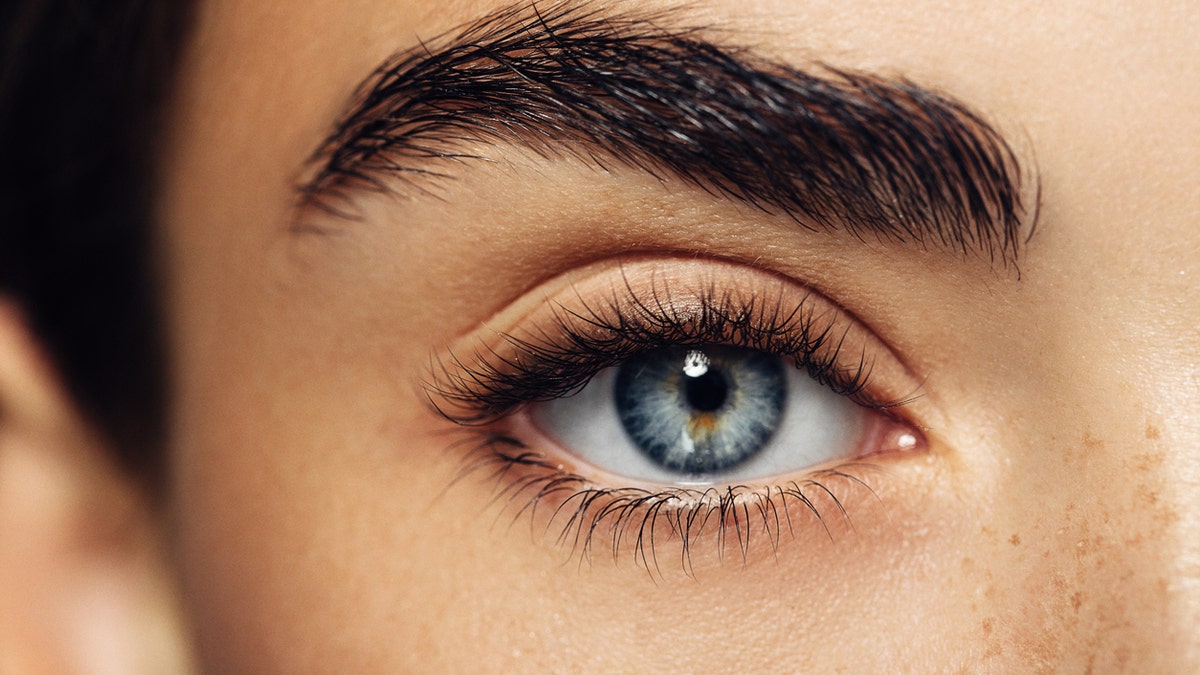
The study found evidence of prions — the infectious proteins that cause the disease — in the eyes of nearly a dozen patients with CJD. (iStock)
People with the rare and fatal brain disorder Creutzfeldt-Jakob disease (CJD) show signs of the disease in their eyes, according to a new study.
The study found evidence of prions — the infectious proteins that cause the disease — in the eyes of nearly a dozen patients with CJD.
The findings suggest that patients' eyes could potentially provide a "window" to the brain that may help researchers diagnose the disease early, if new eye tests are developed. ['Eye' Can't Look: 9 Eyeball Injuries That Will Make You Squirm]
The results also raise concern about the potential for the disease to spread through routine eye exams or eye surgeries, during which equipment could become contaminated with prions, the researchers said.
FAMILY FEELS 'CHEATED' AFTER 20-YEAR-OLD'S SEPSIS DEATH
The study, which was conducted by researchers at the National Institute of Allergy and Infectious Diseases, the University of California at San Diego and UC-San Francisco, was published yesterday (Nov. 20) in the journal mBio.
Prions in the eyes
Creutzfeldt-Jakob disease is a progressive neurological disorder that affects only about 1 in a million people worldwide each year, according to the National Institutes of Health (NIH). The disease, which is related to "mad cow disease" in cows, is caused by prion proteins that fold abnormally, leading to lesions in the brain.
The most common form of CJD is sporadic, which means that the disease does not appear to have a genetic or an environmental cause.
There is no treatment or cure for CJD, and the condition usually results in death within one year of diagnosis.
Previously, a small number of patients with CJD were found to have prions in their eyes. But it was unclear how common this occurrence was, or how widespread the prion proteins are throughout the eye. In addition, these earlier studies were done before the development of more sensitive tests for prions that are available today.
In the new study, the researchers analyzed the eyes of 11 patients who died from sporadic CJD and agreed to donate their eyes for research. The study is the largest to date to examine CJD patients' eyes for prions.
The researchers detected prions in the eyes of all 11 patients. What's more, they found prions in all eight regions of the eye that were tested, including the eye's cornea, lens, ocular fluid, retina, choroid (a part of the eye that contains blood vessels and connective tissue), sclera (the white of the eye), optic nerve (which connects the back of the eye to the brain) and extraocular muscle (which controls eye movement.)
E. COLI OUTBREAK POSSIBLY LINKED TO ROMAINE LETTUCE IN CALIFORNIA, FDA OFFICIALS SAY
The highest levels were found in the retina, the area of light-sensitive cells located at the back of the eye. In some cases, levels of prions in the retina were close to those seen in the brain, the researchers said.
New diagnostic test?
Currently, the only way to confirm a diagnosis of CJD is to test a sample of brain tissue after a person's death. But there are ways to diagnose probable or suspected cases while a person is alive, using analyses of the brain's electrical activity, brain scans or tests for prions in the cerebrospinal fluid.
Still, CJD remains difficult to diagnose, in part because the disease can cause a variety of symptoms, and the symptoms may resemble those of other, more common conditions. (Early symptoms can include anxiety, depression, memory loss, personality changes, vision problems, insomnia, impaired thinking and problems with muscle coordination, according to the Mayo Clinic.)
Given that high levels of prions were found in the retina, this finding "could potentially be exploited for the early diagnosis of prion disease" with certain eye tests, the researchers said. For example, an eye test that measures electrical responses in the cells in the retina may show abnormalities in people with CJD, the researchers hypothesized. Further studies would be needed to investigate how this test or other eye tests might be used to diagnose CJD.
The researchers also note that about 40 percent of patients with CJD experience eye symptoms, sometimes early in the course of their illness. Such eye symptoms might lead patients to have an eye exam, which, in turn, could lead to contaminated equipment that might spread the disease. The new finding "bolsters recommendations for single-use instruments or other decontamination procedures" following eye exams in patients with CJD, the researchers said.
10 things you didn't know about the brain
The 9 most bizarre medical conditions
Originally published on Live Science.
